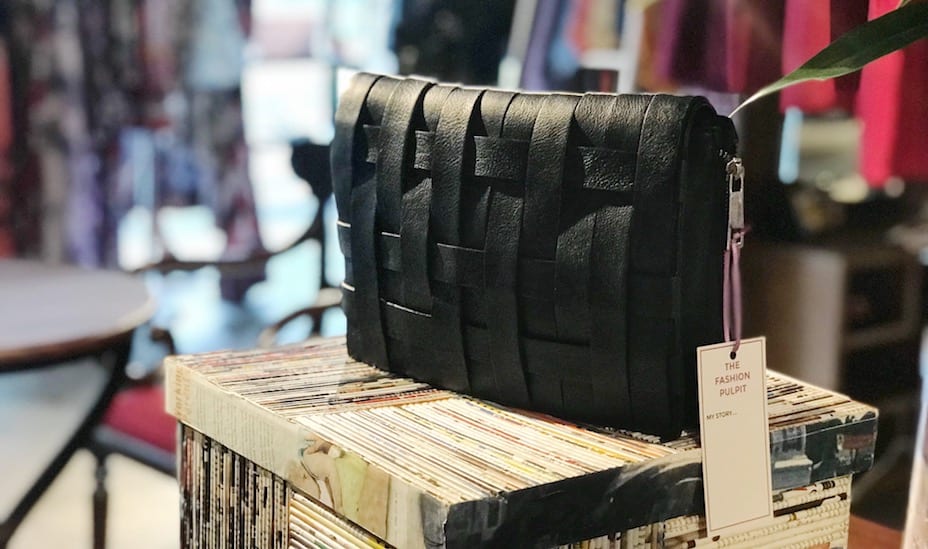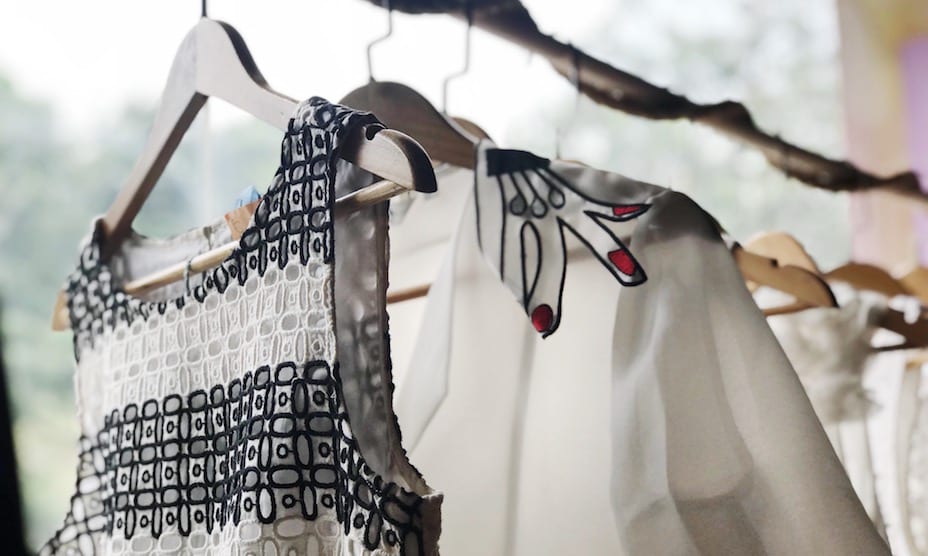
Can clothes swapping save us? We talk to Raye Padit of The Fashion Pulpit about style, sustainability and building a community of eco-conscious fashion lovers in Singapore.
It’s no secret we’re lovers of ethical fashion around here and have been seriously exploring how we can live a little more consciously. We’ve talked about the capsule wardrobe before, we’ve been minimalist-curious, and we even tried to quit shopping. But here’s the thing: if you love fashion but give a bit of a damn, you need to talk to Raye Padit. A former fashion designer, founder of Connected Threads Asia and now The Fashion Pulpit – Singapore’s first permanent clothes swapping boutique – he’s passionate about making a positive change and driving awareness around sustainability and style. He also happens to be one of the loveliest souls you’ll ever meet…
We had a chat about pre-loved fashion and what’s possible at The Fashion Pulpit. The multi-concept space, which is a pre-loved clothing boutique, swapping platform and a hub for events and creative workshops, has already attracted a strong community: in just three months since it opened its doors, its members have brought in over six thousands items of clothes and accessories. Swapping is getting serious in Singapore, people.
You’ve been on the design side of the fashion industry: what made you focus on clothes swapping?

When I started my career in fashion I loved the design process of creating, but I was always conflicted by the question of ‘How does my work matter?’. When I gained knowledge of the negative aspects of the fashion industry, I had to ask: ‘How do I want to be part of this highly polluting industry: as part of the solution or problem?’. So, I began my non-profit org Connected Threads Asia to promote awareness. Through all the events and initiatives I led, it became clear that one of the reasons fashion is a great harm to our planet is over-consumption. It’s estimated we only use 20% of what’s in our wardrobe, and according to a 2016 CNA survey, Singaporeans buy 34 new items of clothing and throw 27 items annually.
So, how do we maximise what we have in our closet? How do we buy less but not feel less fashionable, and reduce textile waste? This is how the clothes swapping concept came about. You can be fashionista, change your wardrobe as often as you want and care for the planet at the same time. Everyone swaps for different reasons, but at the end of the day we are all helping to make fashion a force for good by not wasting good-quality clothes and not accumulating more newly produced items that waste natural resources and will only be worn once or twice.
Are there any misconceptions about clothes swapping you’d like to clear up?
I think pre-loved is as beautiful and stylish as ‘regular’ fashion, if not better. But I have seen and experienced first hand that when people discover the clothes are pre-loved, they straight away walk out. The concern of hygiene and bad spirits living in the clothes are the main reasons why they won’t support the concept. We ask members to always launder their items before surrendering to us, and we steam all the items and use essential oil to help us disinfect every piece.
What are the golden rules of being a good swapper?
Bring something that you won’t be embarrassed to give to a friend.
What’s the best find that’s come through The Fashion Pulpit so far?

The great thing about this space is that you’ll never know what you will get, and having an international market in Singapore, you can pick up unique pieces without travelling. My favourite was an Italian vintage designer bag that one of our members bought during one of her trips to Rome in the 1980s. I didn’t just love the bag because it was a vintage designer item, but the story of her letting go of an item that she invested in financially and emotionally. It wasn’t easy, but she knew someone would love the bag the way she did when she first bought it.
You’ve culled your own wardrobe down to 50 pieces – what was the intent behind this process?
I wanted to focus my energy and head space for important things rather than asking myself what to wear today. Don’t get me wrong: I love dressing up and the idea of dressing well, so I created a uniform that I can wear to meetings or while doing different operational tasks in the studio. I have my work uniform, shirts and a pair of jeans, and I can function well. The start wasn’t easy: seeing only 10 hangers in my closet looked sad, and I still get the urge to fill up my closet, but I put more emphasis on need versus want. The problem of fashion today is we produce more to create the idea that we are ‘becoming more’, when the fact is we just need to be more at ease with ourselves and more conscious of our buying behaviour.
What’s the greatest lesson you’ve learned launching The Fashion Pulpit?

The power of collaboration – building a community is the collective effort of different individuals who believe in the same vision. As much as I would love to take credit in building TFP, it wouldn’t be possible if it weren’t for everyone’s effort and the belief that we all can do better and have a better fashion industry. We highly involve our community in every important step we make, and we want to grow together.
What’s your no-holds barred dream for The Fashion Pulpit?
Business wise, expansion in Singapore and outside Singapore is what we are working on and aiming for; it’s why we work so hard to test different ideas and initiatives. But, the reason why we all started this is to see a change in consumer behaviour. We may enjoy the cheap price of fashion, but someone, somewhere, is paying a high price – be it an individual or our planet. So it is important to accept our responsibility as a consumer, from what we choose to buy to what we do with it.
What do you find most meaningful about your work?

I started TFP to create an easy alternative for everyone who wants to be part of the sustainable fashion movement by maximising what we have in our closet, prolonging the lifespan of our clothes and reducing textile waste by upcycling. I treasure every story from members of the community: how swapping changed their shopping behaviours, that they found new friends, became more daring with their style, or how much money they now save because they buy less and swap instead. The truth is that we can’t stop anyone from buying new items, but when I started organising swap events, my goal was to have them consider swapping before buying. It is a long road to change a behaviour, but we are on the right track.
If you could convince people to change one thing about how they consume fashion (as a shopper, or as a swapper) what would it be?

Fashion is how you express yourself without uttering a single word. So, when you step out make sure that what you are wearing screams YOU – not something that you copied from a magazine or post in IG that you saw last weekend. Consume fashion responsibly and express yourself!
The Fashion Pulpit, #02-08 Liang Court, 177 River Valley Rd, Singapore 179030

